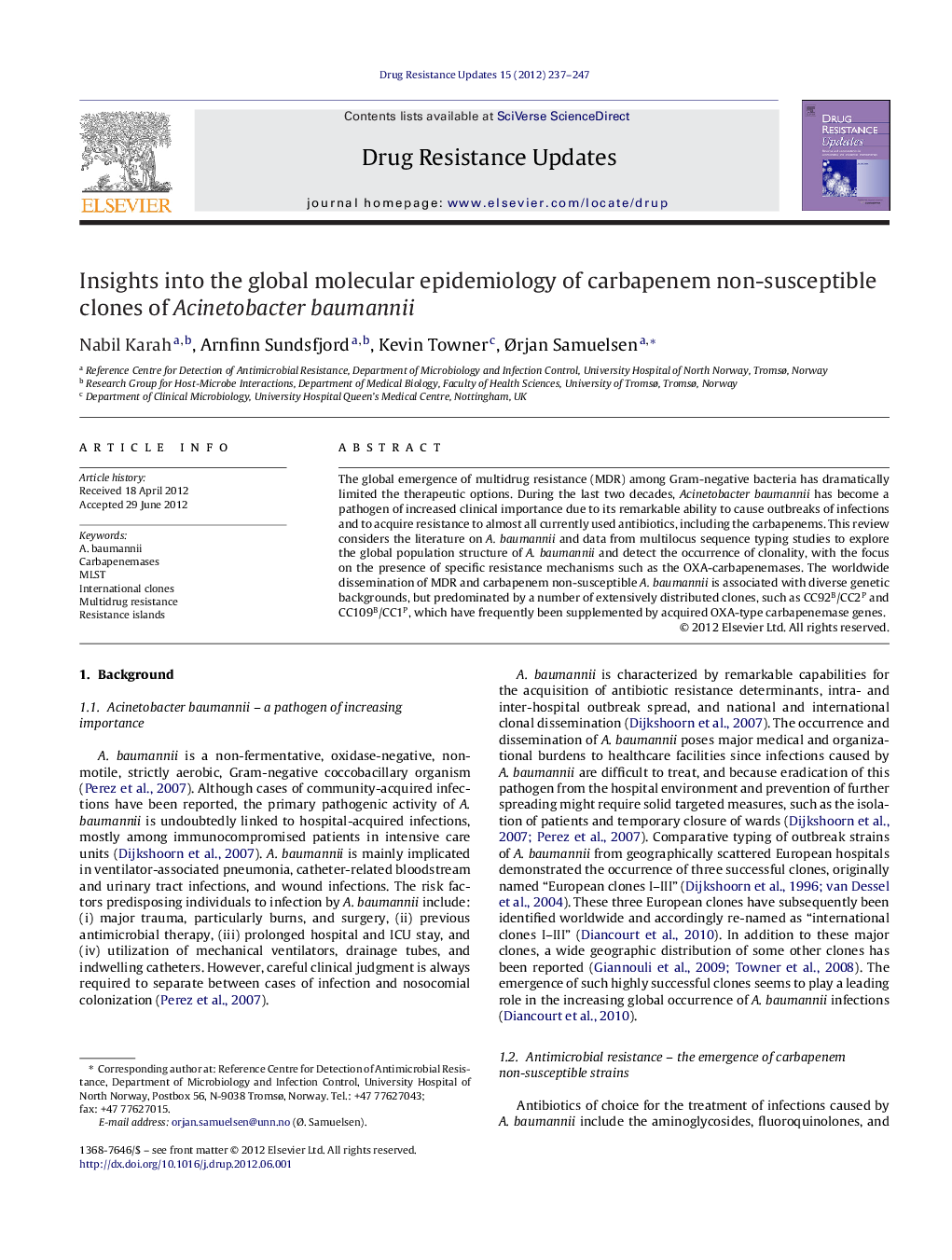| Article ID | Journal | Published Year | Pages | File Type |
|---|---|---|---|---|
| 2120400 | Drug Resistance Updates | 2012 | 11 Pages |
The global emergence of multidrug resistance (MDR) among Gram-negative bacteria has dramatically limited the therapeutic options. During the last two decades, Acinetobacter baumannii has become a pathogen of increased clinical importance due to its remarkable ability to cause outbreaks of infections and to acquire resistance to almost all currently used antibiotics, including the carbapenems. This review considers the literature on A. baumannii and data from multilocus sequence typing studies to explore the global population structure of A. baumannii and detect the occurrence of clonality, with the focus on the presence of specific resistance mechanisms such as the OXA-carbapenemases. The worldwide dissemination of MDR and carbapenem non-susceptible A. baumannii is associated with diverse genetic backgrounds, but predominated by a number of extensively distributed clones, such as CC92B/CC2P and CC109B/CC1P, which have frequently been supplemented by acquired OXA-type carbapenemase genes.
